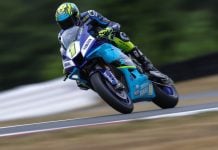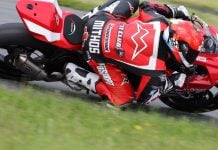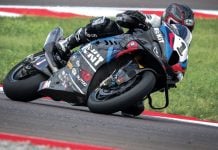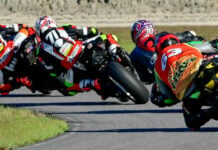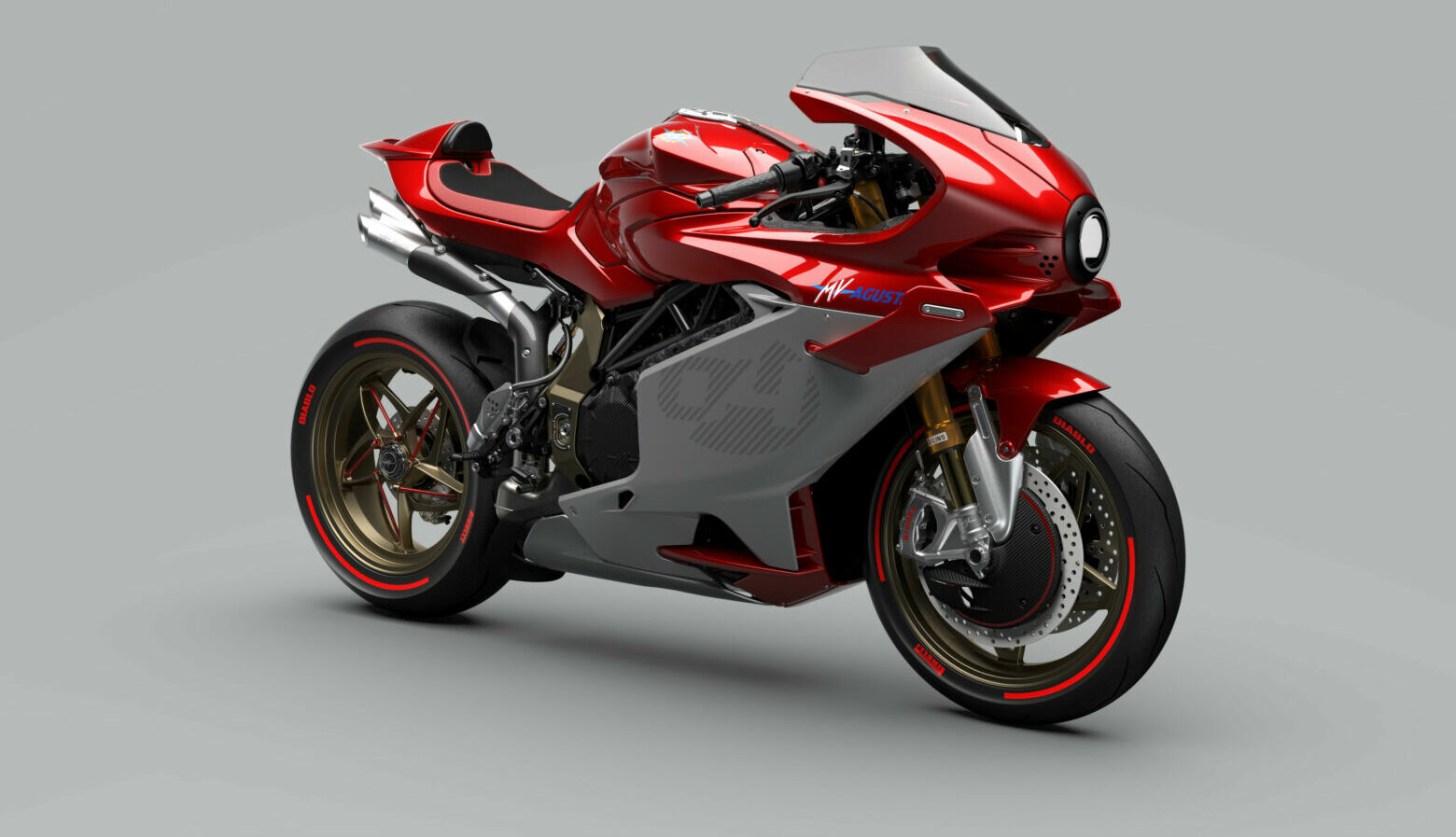THE NEW MV AGUSTA SUPERVELOCE 1000 SERIE ORO
A legend created by racing success. The magic of a truly unique history. Design excellence that has redefined contemporary motorcycle style. Today, all of this comes together in the new MV Agusta Superveloce 1000 Serie Oro.
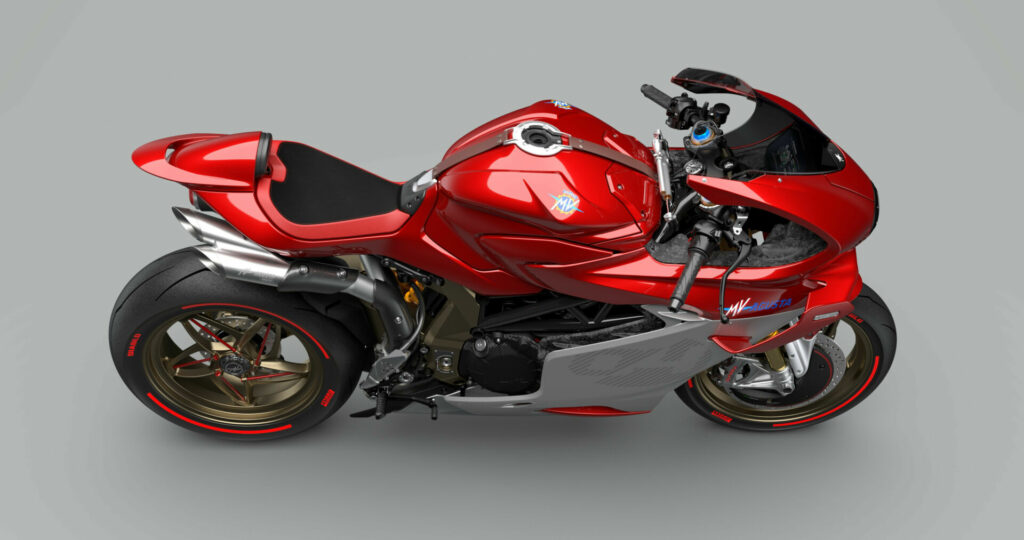
An exclusive limited series, each hand assembled and numbered, supplied with a certificate of authenticity and comprehensive racing kit. The Superveloce 1000 Serie Oro stands alongside the hugely popular Superveloce 800, godfather of the MV Agusta neo-retro lines. This is a significant technical and stylistic evolution of the 800, driven by research and development employing CFD (computer fluid dynamics) and other cutting-edge technology, focused above all on important advances in aerodynamics.
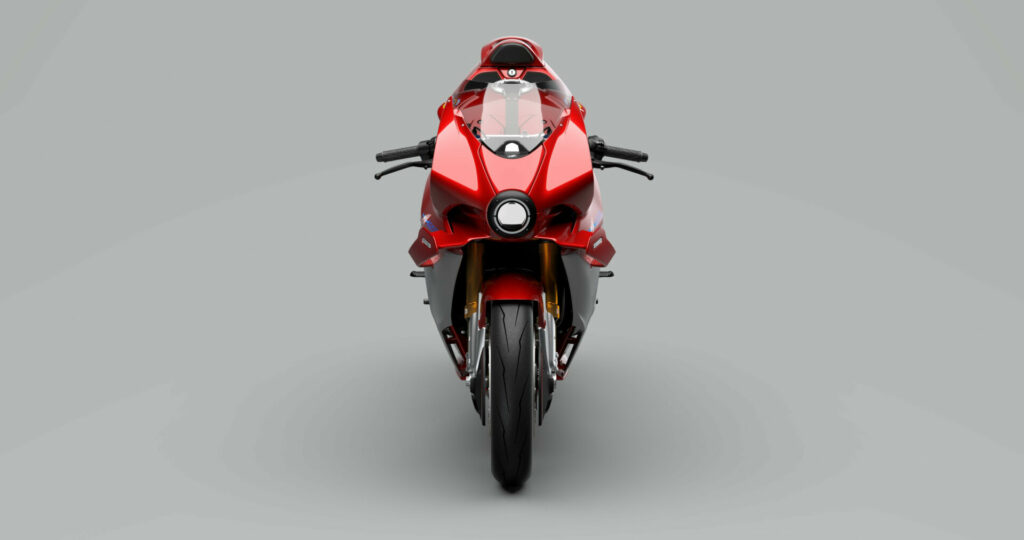
R&D Director, Brian Gillen: “With the Superveloce 800, we created the neo-retro supersport category. We have now gone even further, adding to the range and creating a neo-retro hypersport bike. We have drawn on our history as a technological pioneer, but the Superveloce 1000 Serie Oro goes far beyond a look back at the past. Application of technology has not been focused solely on the bike itself but on the entire manufacturing process: from design and development tools through to industrialisation. Technology features throughout the process, from start to finish: 3D scanning, computer fluid dynamics, 3D modelling and virtualisation. One example is our analysis of carbon-fibre production processes and choice of multiple build technologies, both manual laminate and forged, based on real usage requirements. They have specific characteristics that we can utilise, such as the reduced thickness and multi-directional resistance of forged carbon fibre. Technology, not only for the component itself but the entire process. We have been able to employ new technologies that until just few years ago would have been considered futuristic, and which we have used to explore the relationship between style and engineering.”
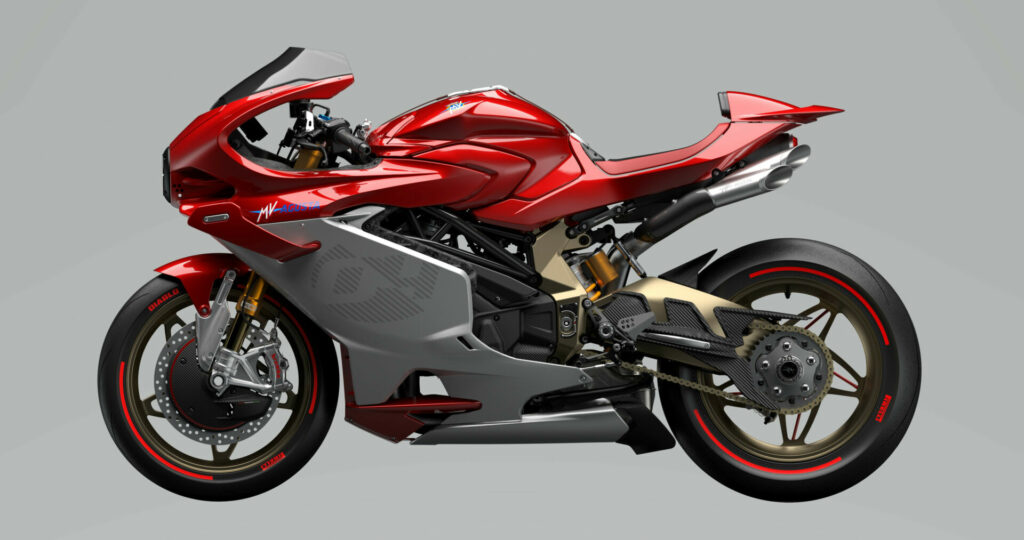
Based on the platform of the Brutale 1000 RR, the Superveloce borrows the frame, single-sided swingarm, and naturally the four-cylinder inline engine. The bike is proudly inspired by the legendary MV Agustas competing in the World Championship, particularly the MV 500 model, which 50 years ago, in 1972, debuted the first aerodynamic wings in Grand Prix Racing. In fact, MV Agusta has always been a pioneer in the use of aerodynamic elements on the front of the bike.
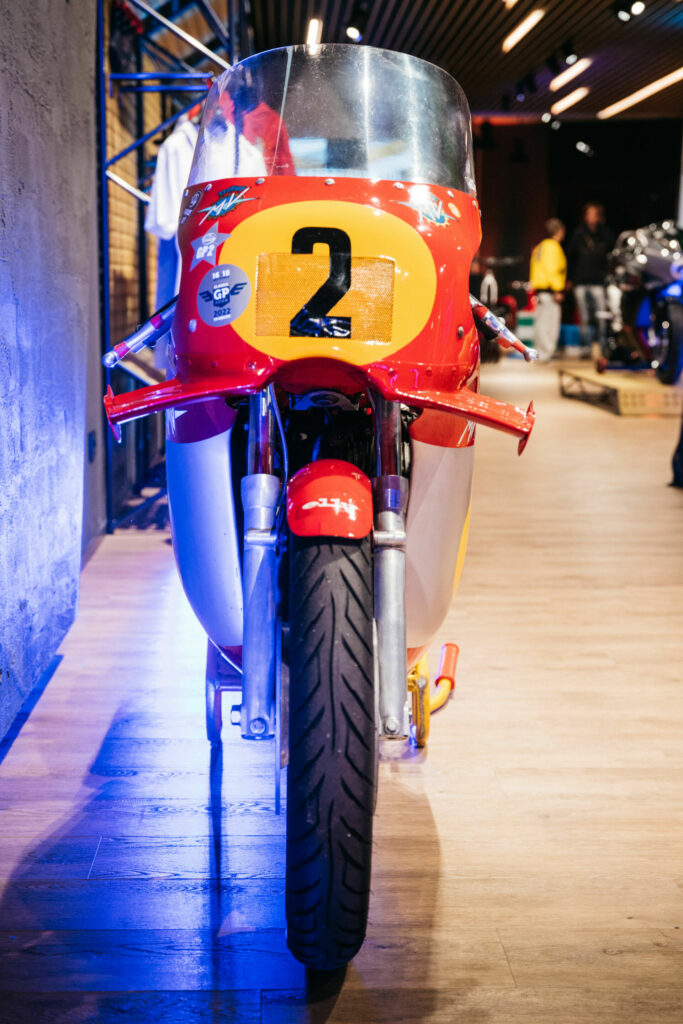
Today, this technical and stylistic choice is developed and consolidated with an almost futuristic design. At the same time, retro features make the Superveloce 1000 Serie Oro a conceptual successor of the ‘60s and ‘70s racing bikes, highlighting the Italian brand’s tradition of technological advancements.
The Superveloce 1000 Serie Oro has many features that combine to celebrate complete integration of aerodynamics with style and design. One example is the carbon-fibre disc-brake covers on the front, which offer eye-catching aesthetics, evocative of the drum-brakes of old, but which also serve to cool the calipers. In addition, air flows around the brakes and is then guided towards the water and oil radiator, promoting cooling. Along the fairings, air vents positioned further out and lower feature additional elements in relation to the main unit: this generates downforce on the front wheel and creates a vacuum behind the oil radiator, speeding up output of warm air from the radiator. There is a clear dual aerodynamic and thermodynamic purpose: form and function. 39.2 kg of downforce is generated at 320 km/h through precise aerodynamic design. Development work on air flow has optimised the oil temperature, increasing engine efficiency.
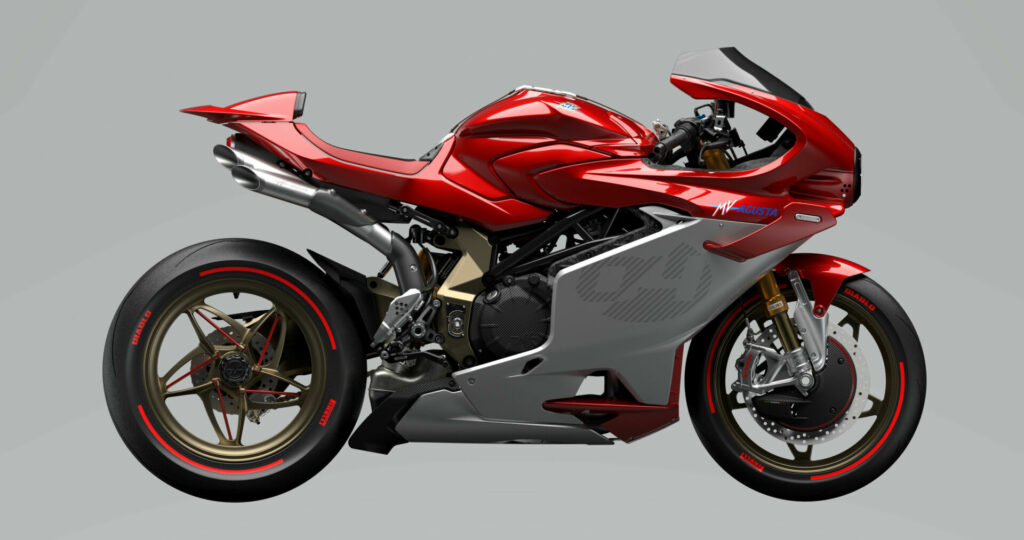
Computational fluid dynamics development activity is even more evident in the design of the main wing surface, which spans the entire width of the front portion, with the exception of a small area under the front headlight assembly. The wing looks thoroughly integrated, unlike in many cases where it seems out of place. Here, it adds to the design and character of the motorcycle. In this sense the Superveloce 1000 Serie Oro stands out significantly from competitors, who adopt an approach essentially focused only on function, compromising stylistic development (form).
Stephane Zache, head of design for the Superveloce 1000 Serie Oro with the CRC team: “As a designer, I can affirm that there are mechanical and aerodynamic parts that are extremely technically functional yet with very little style, such as many MotoGP components. On our Superveloce 1000 Serie Oro, the wings are effective but also have a strong stylistic value. Form follows function, and the result is extremely successful in design terms. We have revisited the concept of the wings, drawing inspiration from Formula One, particularly regarding the need to keep air flow as close as possible to the bike. Consequently, we have worked on the air flow to “clean it up” and achieve a better drag coefficient. In MotoGP, the only goal is to generate downforce. We wanted to also eliminate problems for the driver generated by airflow. And at the same time to achieve a stylistic result in line with MV Agusta excellence.”
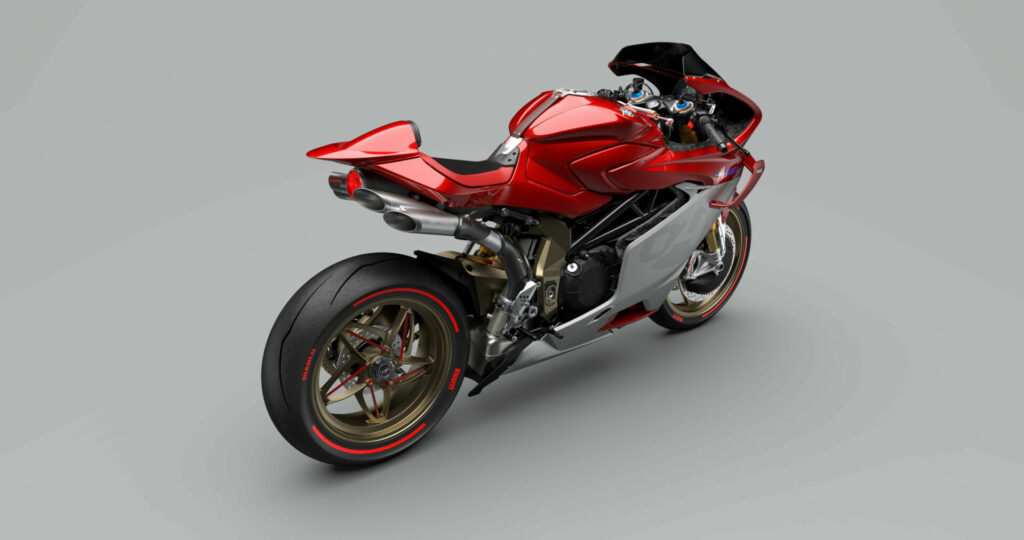
All elements of the body are created in carbon fibre, with the exception of the fuel tank in thermoplastic resin. In all, there are 40 elements in carbon fibre that enable the Superveloce 1000 Serie Oro to hit the target both in terms of aesthetics and weight: another refinement for a truly unique model.
Engine and electronics
The power and torque values are genuinely impressive: 208 hp at 13000 rpm (212 hp with racing kit) and 116.5 Nm at 11000 rpm. The most recent evolution of the inline four-cylinder 998 cc engine of the Brutale 1000 RR is equipped with a countershaft that rotates at twice the speed of the primary drive shaft. The goal? To eliminate high-frequency vibrations and enable easier and faster cornering. This technical solution has a significant impact on the handling and reactivity of the bike, and it increases at higher revs, reducing vibrations by 54% at 14,000 rpm.
For the Superveloce 1000 Serie Oro, MV Agusta has developed a package that covers all functionality of the feature-packed standard electronics set-up, starting with mapping of the ECU control unit, defined according to the specific characteristics of the model. Adjustment of the MV EAS 3.0 electronic gearbox (Electronically Assisted Shift Up & Down) has been customised on the Superveloce 1000 Serie Oro, just like adjustments of the ABS Cornering Continental MK100 system with RLM (Real Wheel Lift-up Mitigation). Switchable traction control has eight levels, while wheelie control utilises data gathered from the inertial platform.
Whilst adopting the high-performance engine, suspension and frame of the Brutale 1000 RR, weight distribution on the Superveloce 1000 is different. The suspension is of the highest quality, boasting a front-end Öhlins Nix EC fork with TiN coating, fully adjustable and with electronic compression and rebound management. Adjustment of the spring preload is manual. The single shock absorber is also an electronically controlled Öhlins model (EC TTX). Connected to the single-sided swingarm in aluminium alloy with height-adjustable pin (+/- 4 mm), this guarantees wheel travel of 120 mm. The Öhlins steering damper also features electronic adjustment, which can be integrated with manual control. The exceptional braking system features Brembo Stylema monobloc radial callipers and 320 mm discs at the front, with a 220 mm steel disc and two-piston calliper at the rear.
The wheel rims, in forged aluminium alloy, have been exclusively designed by CRC for the Superveloce 1000 Serie Oro and stand out for their integration of various construction techniques, with a five-spoke design. Naturally, the whole exhaust system as unique, which features the iconic four-outlet set-up, originating from the first, unforgettable F4. The exhaust, included in the kit supplied with the bike, is built in titanium in collaboration with Arrow. It is certified and makes an impact with its particularly eye-catching colouration.
Instrumentation is built around the large 5.5″ TFT colour display and all primary functionality has been updated for 2023, featuring dedicated graphics. The stunning back-lit multifunctional electronic controls remain, as does the MV Ride App, enabling smartphone management of electronics and engine. Connectivity, including mobile connection, navigation, recording of itineraries and transfer of journey data, is one of the real strengths of the motorcycle-rider interface: constantly evolving at the service of the user.
Ergonomics
Development in the direction of hypersport design for the Superveloce 1000 Serie Oro has a highly original approach, going well beyond aerodynamic research. The driving position, in particular, is not extreme, but instead designed to guarantee the rider comfort equivalent to that of a motorcycle from a less sports-focused class. The semi-handlebars are located higher and further back compared to a standard supersport position. The footpegs are height adjustable for highly customisable triangulation with the handlebars and saddle. Suspension with dedicated calibration and electronic control is another feature making the bike design less extreme than the futuristic lines and undoubtedly hypersport design of the Superveloce 1000 Serie Oro would lead you to expect.
Serie Oro, a success story
The first Serie Oro was naturally the F4 750, presented in 1997 and immediately one of the most desirable models for motorcycle collectors the world over. The Brutale 750 Serie Oro, instead, dates back to 2002 and like the F4, was immediately recognisable for the many gold components in magnesium alloy: frame plates, forks and star-design wheels. It was ten years before the next Serie Oro, the F3 675, which introduced the three-cylinder engine and launched a new, exciting direction for MV Agusta supersports bikes. 2019 saw two models: the Superveloce 800 Serie Oro, with its classic minimalist design, and the Brutale 1000 Serie Oro, packed with prestige technical components and an angular, muscular design.


